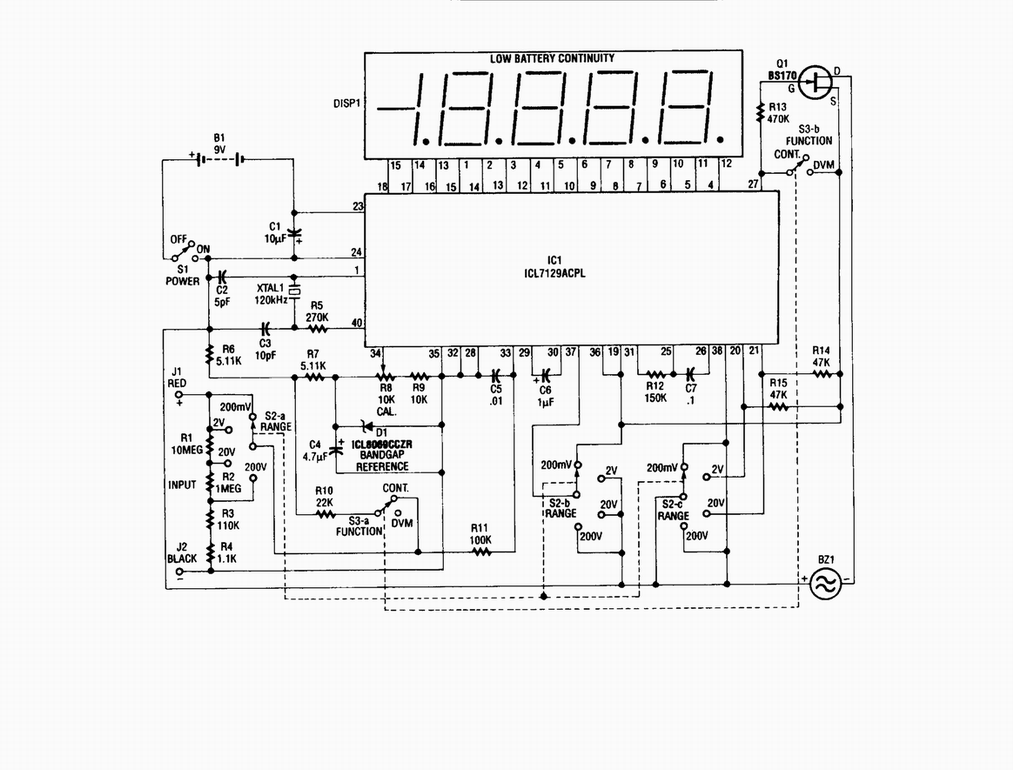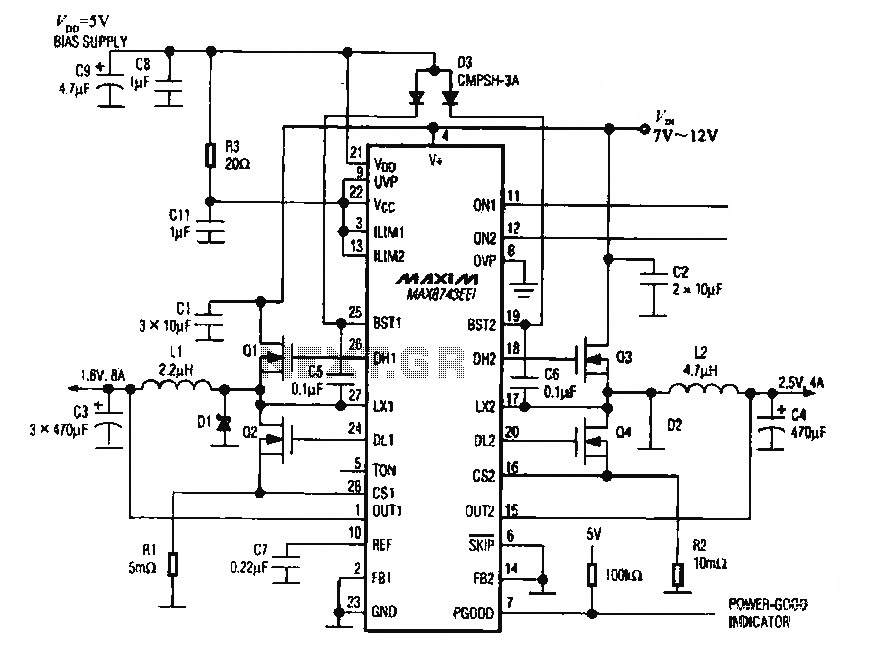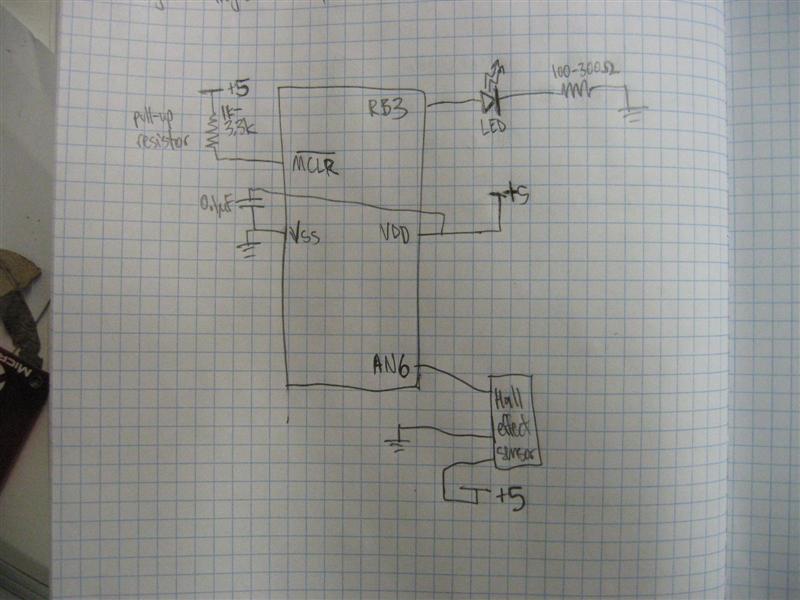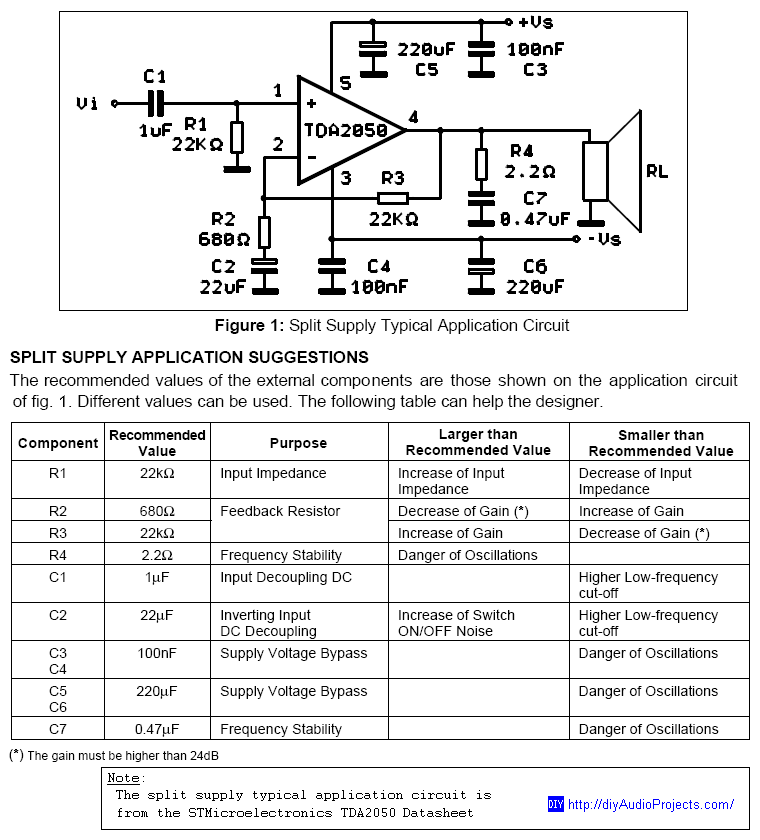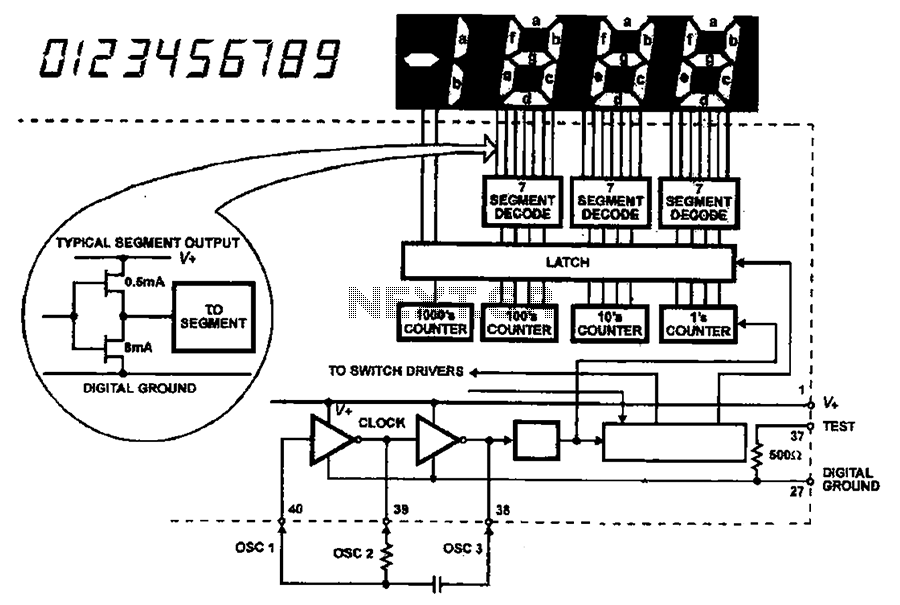
IC Adder Chip
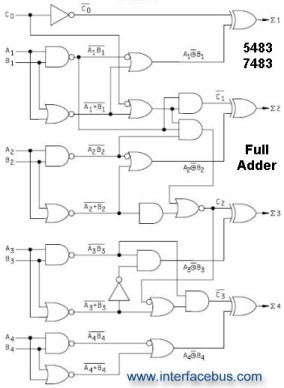
A 4-bit adder adds two four-bit binary numbers along with a carry-in line. The accompanying diagram illustrates the logic gate schematic of a 4-bit adder. A full adder accepts two inputs and a carry-in line, while a half adder does not accommodate a carry-in bit. Both types of adders will produce a carry-out bit; however, the carry-out is not depicted in the provided diagram. Additionally, a schematic link presents the transistor view of a 4-bit adder circuit. An example of the 5483 diagram is provided, but there is no functional difference between the 5483 and the 54283 components. Both the xx83 and xx283 series are electrically and functionally identical, although their pin configurations differ. Consequently, a 54LS83 cannot be utilized in a circuit designed for a 54LS283. Furthermore, there is no distinction between the commercial temperature range 74283 and the military temperature range 54283, as both are electrically and functionally identical with the same pin layout when using the same package. However, the package styles for the 74283 and 54283 may vary. The primary difference between the two ICs is that the 54xx version operates at a higher temperature than the 74xx version.
The 4-bit adder circuit is a fundamental digital component used in arithmetic operations, particularly in binary addition. It consists of four full adders connected in series, where the output carry from each full adder serves as the carry input for the next significant bit. Each full adder takes three inputs: two binary digits (A and B) and a carry-in (Cin). The outputs are the sum (S) and the carry-out (Cout).
The full adder can be implemented using basic logic gates: XOR, AND, and OR gates. The sum output can be expressed as S = A XOR B XOR Cin, while the carry-out is given by Cout = (A AND B) OR (Cin AND (A XOR B)). This allows the circuit to handle the addition of binary numbers correctly, including cases where the addition results in a carry.
In the context of integrated circuits, the 54LS83 and 54283 are popular choices for implementing 4-bit adders. The 54LS83 is designed for commercial applications, while the 54283 is intended for military use, featuring a wider operational temperature range. Both ICs share similar functionalities and pin configurations, ensuring compatibility in circuit designs, albeit with attention to the specific package styles and temperature ratings.
When designing a circuit that includes a 4-bit adder, it is crucial to consider the supply voltage, input signal levels, and the desired operational temperature range. The choice between the 54LS83 and 54283 should be made based on the application's environmental requirements. Proper layout practices, including minimizing trace lengths and ensuring adequate power supply decoupling, will enhance the performance and reliability of the 4-bit adder circuit.A 4-bit adder which adds two four bit binary numbers with a Carry in line. The diagram above show the logic gate schematic of a 4-bit adder. A full adder take in two number and a carry in line, while a half adder does not allow a carry-in bit. Although both a full adder and a full adder will output a carry out bit. Note the Carry Out is not shown in the diagram above. This schematic link shows the transistor view of a 4-bit adder circuit. A 5483 diagram is shown as an example, but there is no difference between the functions of a 5483 and a 54283 part. Both [xx83 and xx283] components are electrically and functionally identical, however they do differ in their pin out.
So a 54LS83 will not function in a circuit layed out for a 54LS283 part. There is also no difference between a Commercial Temperature range; 74283 and a Military Temperature range; 54283. The pin out is the same and they are also electrically and functionally identical. They also have the same pin out or pin lay-out when both are selected using the same package. However the package styles offered for the 74283 and the 54283 functions may be different. The only real difference between the two ICs is that the 54xx version will operate to a higher temperature than the 74xx version.
🔗 External reference
The 4-bit adder circuit is a fundamental digital component used in arithmetic operations, particularly in binary addition. It consists of four full adders connected in series, where the output carry from each full adder serves as the carry input for the next significant bit. Each full adder takes three inputs: two binary digits (A and B) and a carry-in (Cin). The outputs are the sum (S) and the carry-out (Cout).
The full adder can be implemented using basic logic gates: XOR, AND, and OR gates. The sum output can be expressed as S = A XOR B XOR Cin, while the carry-out is given by Cout = (A AND B) OR (Cin AND (A XOR B)). This allows the circuit to handle the addition of binary numbers correctly, including cases where the addition results in a carry.
In the context of integrated circuits, the 54LS83 and 54283 are popular choices for implementing 4-bit adders. The 54LS83 is designed for commercial applications, while the 54283 is intended for military use, featuring a wider operational temperature range. Both ICs share similar functionalities and pin configurations, ensuring compatibility in circuit designs, albeit with attention to the specific package styles and temperature ratings.
When designing a circuit that includes a 4-bit adder, it is crucial to consider the supply voltage, input signal levels, and the desired operational temperature range. The choice between the 54LS83 and 54283 should be made based on the application's environmental requirements. Proper layout practices, including minimizing trace lengths and ensuring adequate power supply decoupling, will enhance the performance and reliability of the 4-bit adder circuit.A 4-bit adder which adds two four bit binary numbers with a Carry in line. The diagram above show the logic gate schematic of a 4-bit adder. A full adder take in two number and a carry in line, while a half adder does not allow a carry-in bit. Although both a full adder and a full adder will output a carry out bit. Note the Carry Out is not shown in the diagram above. This schematic link shows the transistor view of a 4-bit adder circuit. A 5483 diagram is shown as an example, but there is no difference between the functions of a 5483 and a 54283 part. Both [xx83 and xx283] components are electrically and functionally identical, however they do differ in their pin out.
So a 54LS83 will not function in a circuit layed out for a 54LS283 part. There is also no difference between a Commercial Temperature range; 74283 and a Military Temperature range; 54283. The pin out is the same and they are also electrically and functionally identical. They also have the same pin out or pin lay-out when both are selected using the same package. However the package styles offered for the 74283 and the 54283 functions may be different. The only real difference between the two ICs is that the 54xx version will operate to a higher temperature than the 74xx version.
🔗 External reference
